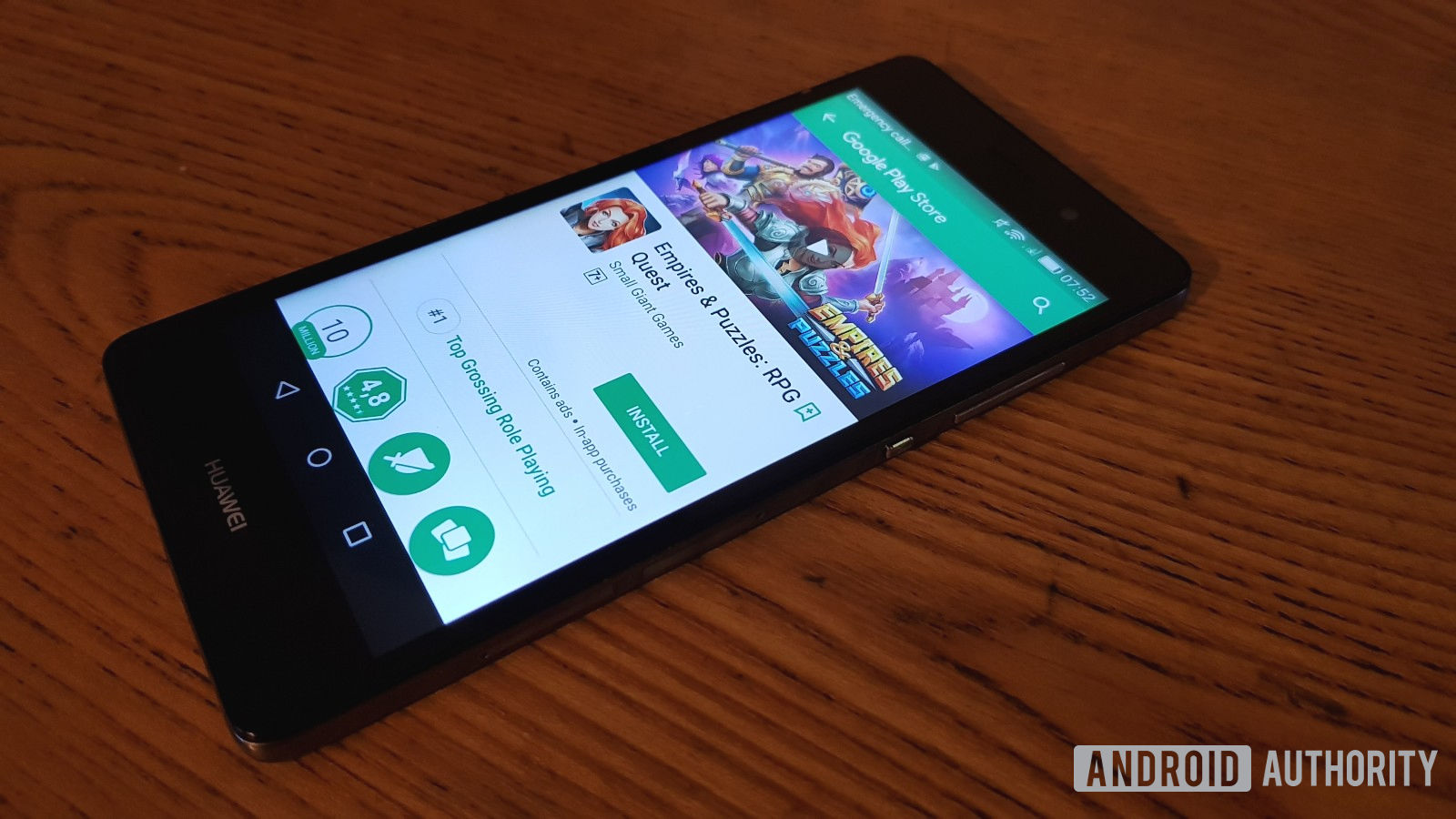Affiliate links on Android Authority may earn us a commission. Learn more.
European OEMs will have to pay up to $40 per device to have Google apps

- Leaked documents give us an idea of what kinds of fees Google will impose on Android OEMs in Europe.
- According to the documents, it could cost as much as $40 per device for OEMs to include Google apps on smartphones and tablets.
- Google will incentivize inclusion of Chrome and Search to offset the cost, but some OEMs could choose to pass the cost on to consumers.
Earlier this week, Google announced it would wildly revamp its business model surrounding the Android operating system for device manufacturers in the European Economic Area (EEA). The big changes are a result of the $5 billion fine pushed to Google by the European Commission due to alleged antitrust issues.

Although Google explained it would start to charge Android OEMs for the use of Google apps — including the Google Play Store — it did not disclose how much it would charge or how it would impose the fees. Now, via leaked documents obtained by The Verge, we have a better idea of how this new structure will work.
According to the leaked documents, Google will charge OEMs for the use of Google apps using three criteria: the country in which the device will be distributed, whether the device is a smartphone or tablet, and the device’s pixel density.
How much will OEMs pay?
At the top end, some devices will see a charge of $40 per unit for the use of Google apps, and devices at the low end will see a much-lower $2.50 per unit charge.
Here’s how it breaks down for smartphones in the U.K., Sweden, Germany, Norway, and the Netherlands:
- Devices with a pixel density of 500ppi or more — $40 per device
- Devices with a pixel density of at least 400ppi, but less than 500ppi — $20 per device
- Devices with a pixel density lower than 400ppi — $10 per device
It is likely Google is using pixel density as a rubric for how high-end a smartphone is. The Samsung Galaxy Note 9, for example, has a pixel density of 516ppi, which would put it squarely in the premium, $40-per-device category. A mid-range device like the Nokia 7.1 has a pixel density of 432ppi, putting it in the middle category.
Tablets have a whole different metric, with the highest price any OEM will have to pay being $20 per device.
What are the OEMs paying for?
The per-device fees discussed above are to obtain authorized use of Google Mobile Services, the collection of Google applications which appear on most Android phones. This would include apps like Gmail, Google Maps, Google Drive, Google Photos, and the Google Play Store itself. Without these apps, an Android user would have to use other, third-party solutions for those products — or illegally download and install the proprietary suite without a license.
However, in Europe, the Google Mobile Services suite will not include the Google Chrome browser or Google Search. These two Google products — which are at the center of the European Commission’s antitrust case against the company — are licensed separately from the Google Mobile Services suite.
Google is trying to appease the European Commission by separating out its products and charging licensing fees.
The reason these two products are separated is that Google’s previous method of bundling everything together (which, one should note, it still will do in the rest of the world) is seen by the European Commission as anti-competitive. Since OEMs have to install everything on every Android device to get the Google Play Store, Google is pushing out competition and “monopolizing” Android, in a way.
Will OEMs pay the fees? What if they don’t?
It is highly likely most OEMs will pay these fees for most of their devices. However, Google is also offering a way for OEMs to potentially curb the fee, which is sharing revenue from Google Chrome and Google Search.
Right now, most OEMs profit a little from Google every time you use Chrome or Search on your Android device. As part of this new business model, OEMs who choose not to include Chrome or Search won’t get a cut of that revenue anymore. This will encourage OEMs to keep the Google Mobile Services suite and Chrome and Search on every Android device.
It's hard to imagine OEMs selling Android devices without Google apps, so it's likely they will pay these fees.
However, it is possible some OEMs could choose to swallow the per-device fee and negotiate terms with a third-party search engine and supply its own browser. Depending on the deal, OEMs could make as much or more money from competitors in this fashion — which, of course, is exactly what the European Commission wants.
Although it is unlikely, some OEMs could decide to bypass Google altogether and release Android devices “Google-free.” While this is not unheard of, it is a hard sell for consumers who will expect an Android device to at least have access to the Play Store, if nothing else.
Won’t this make devices more expensive?
In a word? Probably. OEMs might see the loss of $40 per device — even if that $40 is getting recouped through Search revenue-sharing — as a new expense, and adjust the consumer cost of a device to compensate. It’s not hard to see a company lose $40 on a unit and then charge $40 more for that unit to make up for it. It’s short-sighted, but it’s a natural reactionary move.
We won’t know if this new policy will raise smartphone prices until early 2019 when the policy takes effect. Even then, most new smartphones increase in price anyway, so it will be hard to say that this alone was the reason why, say, the Samsung Galaxy S10 is more expensive than the Samsung Galaxy S9.
One thing is fairly certain though: this isn’t going to make your devices get any cheaper.
NEXT: Should you replace your aging Pixel with a new Pixel 3?